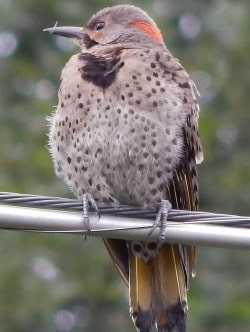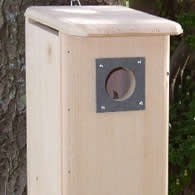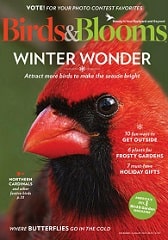Northern Flicker Nesting, Mating, Feeding Habits
What Does a Flicker Look Like?
The Northern Flicker is a large bird measuring between 10-14 inches long.
The back and wings are brown/tan and black-barred with a whitish or buffy breast with black spots and a wide black band across the breast.
Northern Flickers can be found throughout North America in parks, suburbs, farmlands, woodlands, and deserts. Their appearance differs depending on where they live.
There are 5 subspecies with 3 common in Canada and the lower 48 states.

Northern Flicker Perched on Powerline
Northern Flicker Call
In the East and North, it's the Yellow-shafted Flicker, which has a red patch on its neck and yellow feathers on the inside of its wings. The male has a black mustache.
In the West, lives the Red-shafted with its red underwings, undertail, and a red mustache.
In the deserts of S.E. California and southern Arizona, it is the Gilded Flicker you'll see. It will have yellow wing linings and the males have a red mustache.
Where the bird ranges overlap, different flickers sometimes interbreed, creating more varied characteristics.
Feeding on Suet
Feeding Habits
Unlike many others in the Pilelea family, (Woodpeckers) who feed while clinging to the sides of trees, Flickers feed on the ground looking for ants, which are 45% of its diet.
Flickers will switch to eating fruit, berries, and seeds in winter. Occasionally seen catching insects in the air.
A good bird for farmers as they shift to crop fields in winter feeding on corn borers. This helps reduce the number of this pest.
You can readily attract this bird to backyard bird feeders filled with black oil sunflower seeds or by using suet feeders.
Mating Habits - Courting
The breeding season of the Northern Flicker begins for most of us in mid-April to mid-May. Pairs may beging nesting earlier in southern states.
Head bobbing, accompanied by the bird's "woikawoikawoika" call, is done by mated pairs as part of their courtship behavior.
If done by members of the same sex, it's a dispute over territory or males competing for a mate.
Part of courtship includes drumming on hollow trees and, more often than anyone likes, drumming on rain gutters, metal exhaust stacks, and other man-made objects.
Nesting Habits
Northern Flickers will use a properly constructed and situated birdhouse for nesting. East to Southeast facing seems most common.
As a cavity nester, the Flicker will excavate a nest in a tree, post, or cactus anywhere from 20 to 35 feet above the ground on average.
Invite Woodpeckers to Nest in Your Backyard

Both males and females will excavate the tree cavity, which is usually done in a dead or decaying tree.
Flickers will also reuse a nest from a previous season or other cavity that is large enough for their needs.
The female will lay 7-9 white eggs that will be incubated by both birds for 11 to 12 days. Eggs are laid on top of the excavated wood chips.
The male incubates the eggs through the night and both birds share incubation during the day.
The young birds will leave the nest in about 24 to 27 days after hatching.
| Northern Flicker Nesting Stats | |
|---|---|
| Eggs | 7 - 9 |
| Incubation | 11 - 12 days |
| Nestling Phase | 24 - 27 days |
| Broods | 1 |
Your Questions Answered - FAQ
Flickers eat more ants than any other North American bird.
Its tongue extends almost three inches beyond its beak, which is ideally suited to this purpose.
Other insects eaten include beetles, caterpillars, termites, fruits, and berries.
Chances are, if you have Northern Flickers, a suet feeder will bring them in for a close look.
Are They Woodpeckers?
Yes, they are in the Picidae family, which includes other common woodpeckers such as the Downy, Pileated, and many others.
The Northern Flicker's feeding habits are different in that they feed on the ground and less in trees like other woodpeckers.
Why Do They Peck Rain Gutters?
The pecking you hear in the morning on your rain gutters is called Drumming.
Woodpeckers do this to attract females for mating and to let males know they are claiming this territory.
The sound of drumming on rain gutters and other types of metal resonates louder than wood. Flickers, unlike humans, like that aspect.
Do They Mate For Life?
Northern Flicker pairs stay together during the nesting season and through the fledging stage, but no in-depth studies show whether they mate for life.
Some pairs may nest together in consecutive seasons while others may choose a different mate.
Ideas For Attracting Them to Your Yard
If you would like to attract Flickers and woodpeckers to your yard, click the link below for some great product ideas.




